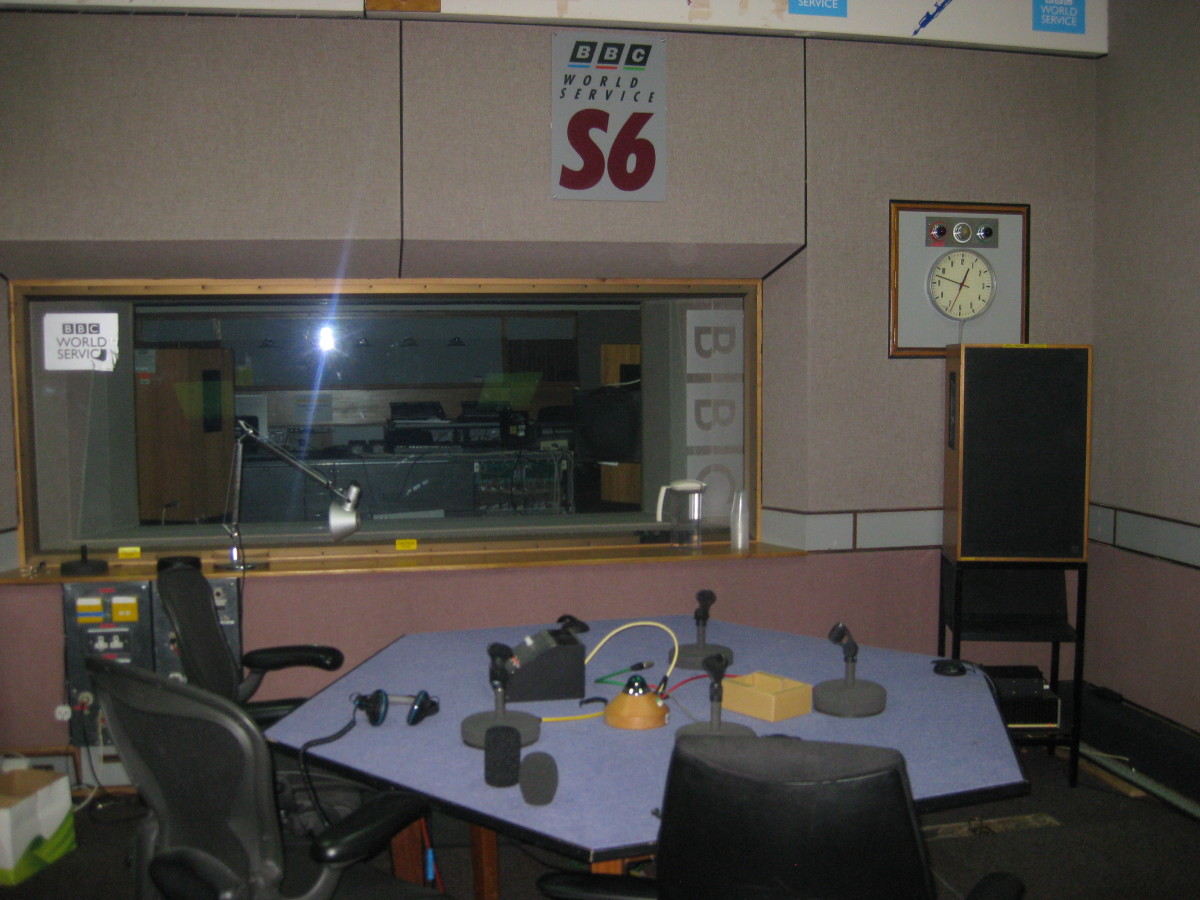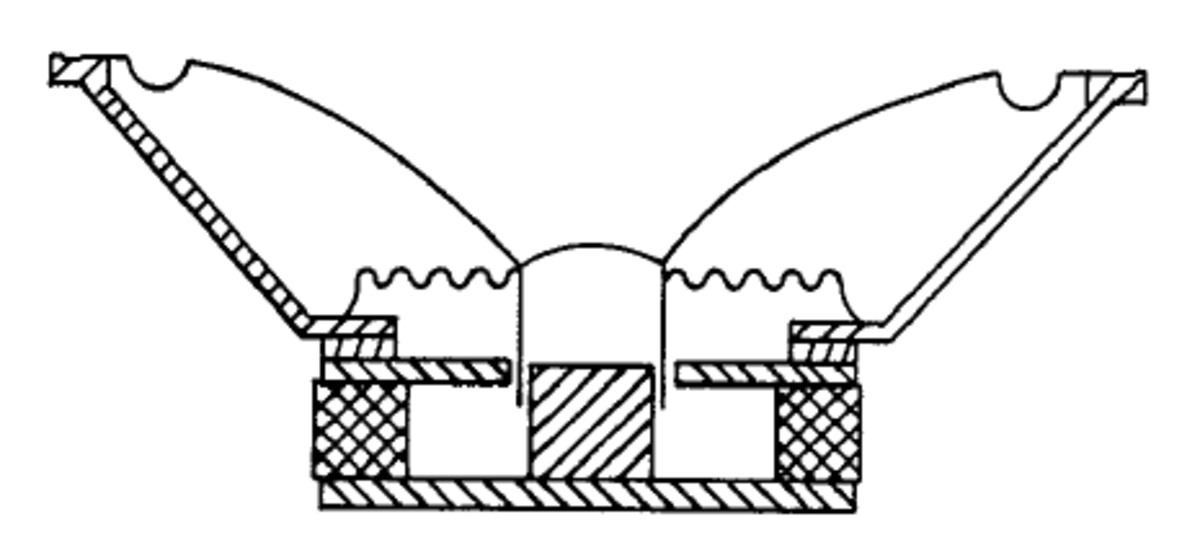The loudspeakers used to do this are called monitor speakers. This implies a high overall quality, high sound level but, above all, a high degree of consistency.
Transducers
A moving coil speaker consists of:
magnet and voice coil to generate movement cone and suspension to convert movement of voice coil to the movement of air
There is a limitation to the range of frequencies and loudness that a transducer can handle:
Frequency range: For a given size of cone it becomes increasingly difficult to move it backwards and forwards at higher frequencies. Loudness: To generate the same sound pressure level, the speaker cone must move further at lower frequencies.
The material for the cone of the low frequency unit should be light for high sensitivity and rigid to avoid distortion. If it is too heavy, the unit requires a larger voice coil, which, in turn, increases the weight. The waste power in the transducer is dissipated as heat in the voice coil and this rise in temperature may be a limiting factor in producing high sound levels. The material for the cone of the high frequency unit must also be light and rigid, but because of its size there are few problems. These two factors lead to the usual arrangement in a speaker system of having a large (10 inch) unit for the frequencies up to about 2kHz and a small unit (1.5 inches) for frequencies above 2kHz.
Crossover Networks
If a speaker system consists of two or more units, each handling a different frequency band, a network must be provided to feed only the correct band of frequencies to each unit. This is called a crossover network and it may be one of two different types: passive or active.
Passive
The crossover network consists of inductors, capacitors and resistors built into the speaker enclosure.
The advantages of passive crossovers are that the speaker is self-contained and requires only one power amplifier to drive it.
The disadvantages are that the components are very expensive, particularly for high power monitor speakers. The circuit is difficult to design and must be adjusted on test for each individual speaker unit. Furthermore, power is lost in the crossover network.
Active
The crossover network, which usually consists of active filters rather than inductors and capacitors, is placed before the power amplification. This means that a separate power amplifier is required for each unit. The advantages of an active crossover system is that the components are cheap and the circuit is easier to design and adjust. The active crossover can be independent of the impedance of the individual speaker units.
Enclosures
A speaker drive unit when driven with a signal will move the air both in front and behind the speaker cone. As only the air movement from the front of the cone is required, we must arrange for the rear radiation to be absorbed.
Sealed Enclosure
One way way of doing this is to put the speaker in a sealed enclosure lined with absorbing material. The mass of the cone and the compliance of its suspension are designed to resonate at about 75Hz. Below this frequency, the cone movement and hence the sound pressure level fall significantly. This sealed enclosure technique works well with small low power speakers, but with high power systems which require more cone movement other techniques are employed.
Vented Enclosure
A vented enclosure is one which has an opening consisting of a tube, the volume of which is carefully calculated. The mass of air inside this tube and the compliance of the air in the rest of the cabinet resonate at a frequency of about 38Hz. At this frequency, the cone’s mass and suspension compliance also resonate causing the cone to barely move and thus provide little acoustic output. However, its slight movements are amplified by the Q of the vent resonance producing significant air movement in the vent. Therefore for frequencies around 38Hz sound is generate from the vent and not from the cone. This gives an improvement in low frequency performance over a similarly sized sealed enclosure of about half-an-octave. This content is accurate and true to the best of the author’s knowledge and is not meant to substitute for formal and individualized advice from a qualified professional. © 2022 Mr Singh



